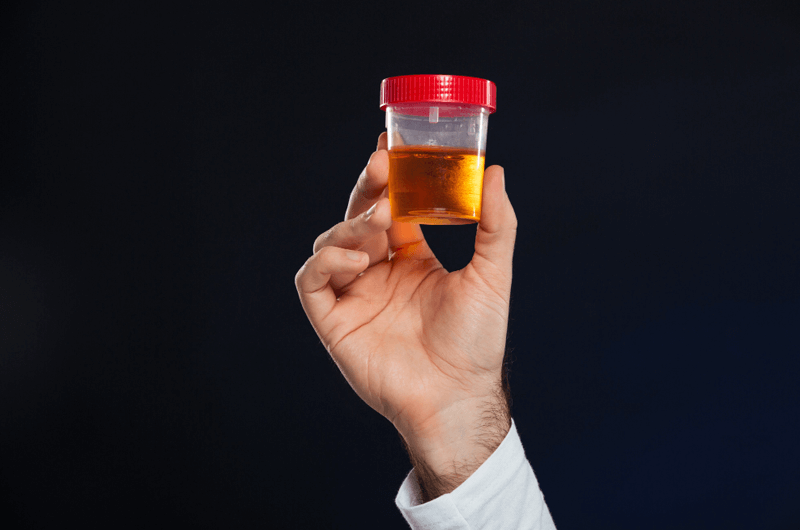The use of urine drug testing has expanded exponentially as it is a great tool for providers to track compliance, identify drug abuse, and encourage patients to stay away from illicit or unprescribed drugs. However, in recent years, there have been several reports of noncompliant billing of drug testing procedures, resulting in fines of millions of dollars for drug testing laboratories, physician practices, and hospitals. Medical billing and coding companies help physicians or other eligible professionals who ordered the test submit claims to meet payer guidelines. However, providers need to use urine drug testing in a compliant matter to prevent denials and allegations of fraud.
RAC Monitor reported that the government identified a “pattern of excessive and unnecessary urine drug testing” that occurred from Jan. 1, 2008, through May 20, 2015. On Oct. 19, 2015, Millennium, one of the largest urine drug testing laboratories in the United States, was caught in the spotlight of public attention when it agreed to pay agreed to pay $256 million to resolve alleged violations of the False Claims Act for billing Medicare, Medicaid and other federal health care programs for medically unnecessary urine drug and genetic testing and other fraudulent billing practices. On Nov. 15, 2015, five former owners of Premier Tox were indicted by a federal grand jury in Kentucky for urine drug testing fraud. In May 2017, the Orange County District Attorney’s Office charged the owners of a string of Southern California sober living homes and two physicians with insurance fraud charges tied to a $22 million urine test billing scheme.
There are two main categories of drugs of abuse testing – ‘presumptive tests’ and ‘confirmatory tests’ (formerly referred to as either qualitative or quantitative analysis. Presumptive testing indicates that an illegal substance may be present. Confirmatory tests provide a positive identification of the substance in question. Presumptive testing is done using test strips that are easily interpreted by visual observation as well as through complex immunoassay procedures performed on advanced analyzers.
The coding and billing of urine drug tests is complex and that the constantly changing guidelines could have created compliance and revenue problems for many providers. In fact, keeping track of these changes and understanding the rules is crucial to avoid non-compliant billing of drug testing.
- Understand code definitions: A recent RAC Monitor article says that accurate coding requires a basic understanding of the test methodology and the drugs or drug classes that are to be analyzed. According to the report, many laboratories and other billing providers that relied on Centers for Medicare & Medicaid Services (CMS) coding guidelines for the various HCPCS codes issued between 2010 and 2016 was that they were easily misled by code definitions referring to CLIA complexity levels. While the FDA does not categorize any of the presumptive methods as being of high complexity, a hospital lab holding a high complexity certificate could interpret the HCPCS G0431 (drug screen, qualitative; multiple drug classes by high complexity test method (for example, immunoassay, enzyme assay), per patient encounter) as being applicable to the immunoassay procedures performed on the random access chemistry analyzer present in any chemistry lab. In January 2017, CMS addressed this issue by deleting the confusing codes and introducing a uniformed coding system for presumptive drug screen services with 3 new CPT codes:80305 (deleted code G0477) Drug test(s), presumptive, any number of drug classes, any number of devices or procedures (eg, immunoassay); capable of being read by direct optical observation only (eg, dipsticks, cups, cards, cartridges) includes sample validation when performed, per date of service80306 (deleted code G0478) … read by instrument assisted direct optical observation only (eg, dipsticks, cups, cards, cartridges) includes sample validation when performed, per date of service80307 (deleted code G0479) Drug test(s), presumptive, any number of drug classes, any number of devices or procedures, by instrument chemistry analyzers (e.g., utilizing immunoassay, chromatography, and mass spectrometry either with or without chromatography, includes sample validation when performed per date of service.
- Know billing rules: Presumptive drug testing includes validity testing when performed and one CPT may be billed per date of service.
- Understand modifier use: Only a laboratory holding a certificate of waiver can use the QW modifier which tells the payer that the testing platform being used is a CLIA waived technology. The QW modifier should not be used for billing by labs holding a moderate or high-complexity CLIA certificate.
- Perform high-complexity confirmation testing only if necessary: High-complexity definitive testing will provide a quantified value of the specific medication or illicit drug identified as well as the concentration or amount of drug that is present. It is recommended that providers consider whether the result from the presumptive test was expected to determine if high-complexity confirmation testing is necessary. For instance, if a patient prescribed an opiate-based drug tests negative for opiates, the result would be unexpected and high-complexity definitive testing would be needed to confirm the results.
- Accurately document medical necessity: The provider’s documentation should be patient specific and clearly reflect the need for each test ordered. The written order of the ordering clinician must indicate each drug or drug class being tested and this should be documented in the patient’s medical record. Examples of documentation that may be requested for medical review of claims for laboratory tests, including urine drug screenings are:
- Clinical evaluations, physician evaluations, consultations, progress notes, physician’s office records, hospital records, nursing home records, home health agency records, records from other healthcare professionals and test reports.
- Supplier/laboratory notes include all documents that are submitted by suppliers and laboratories in support of the claim.
- Other documents include any records needed from a biller in order to conduct a review and reach a conclusion about the claim.
One question is how frequently UDT testing should take place. The Substance Abuse and Mental Health Services Administration (SAMHSA), the federal agency responsible for determining clinical standards, recommends that, in the addiction context, urine drug testing be used on a step-down basis – starting with more regular testing and increasingly tapering to less frequent, at risk points (such as after a holiday weekend), based on erratic behavior, and on a random basis. Insurance companies have generally acknowledged that more frequent testing may be needed during treatment for chemical dependency in order to track compliance.
Outsourcing medical billing and coding is a feasible option for physicians’ office laboratories and commercial laboratories specializing in urine drug testing to avoid wrongful billing practices that can lead to charges of fraud and abuse and to maintain compliance with payer guidelines and code updates.




